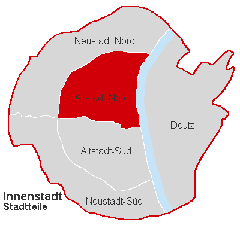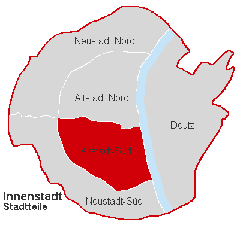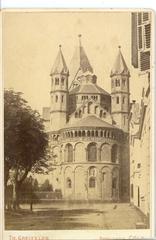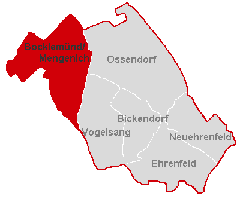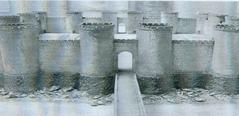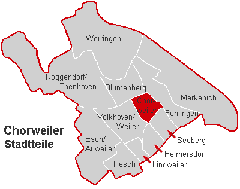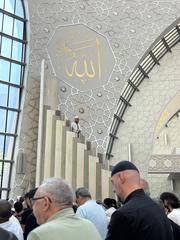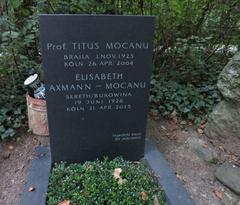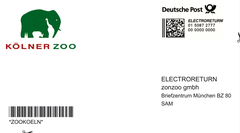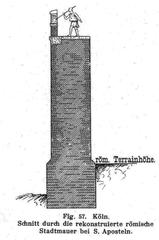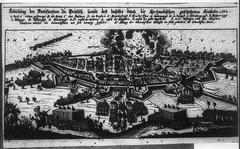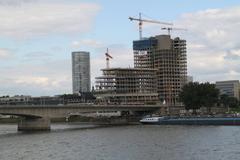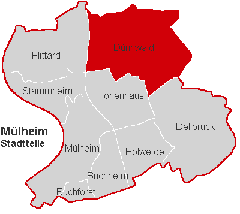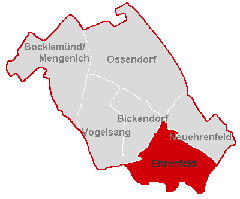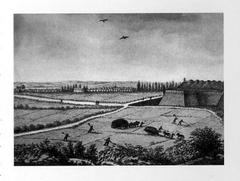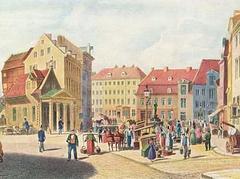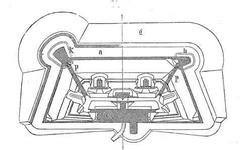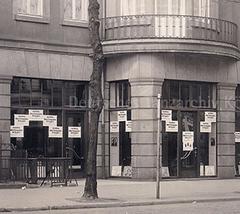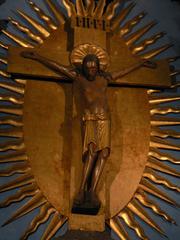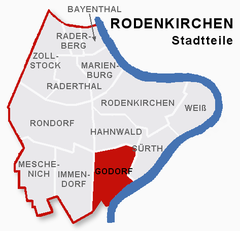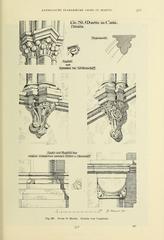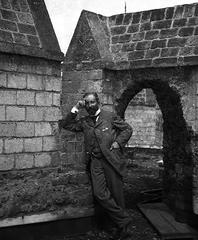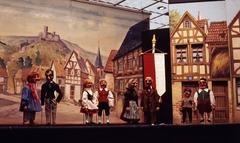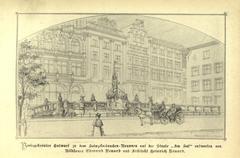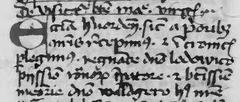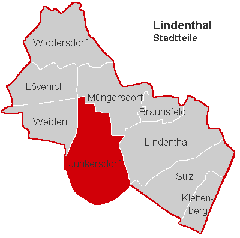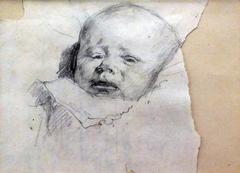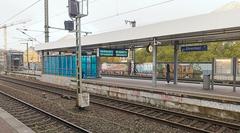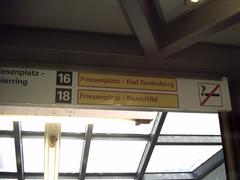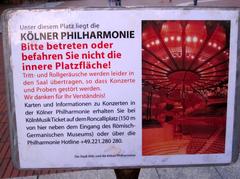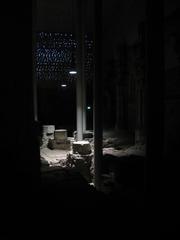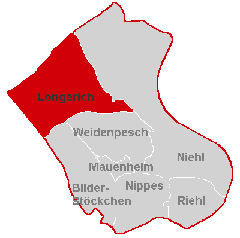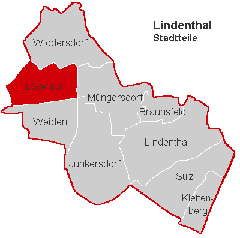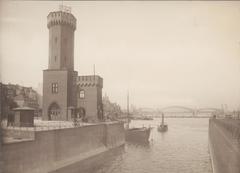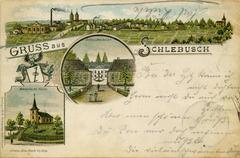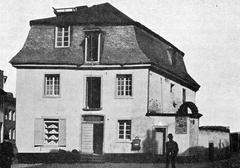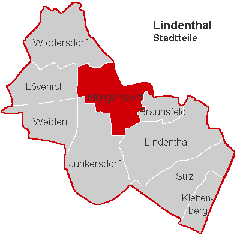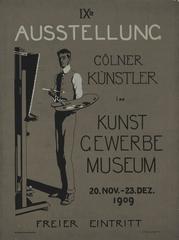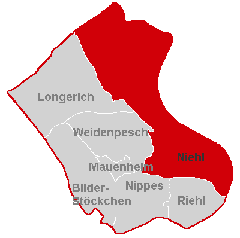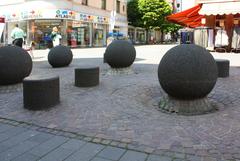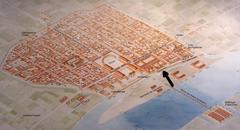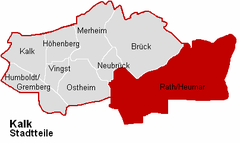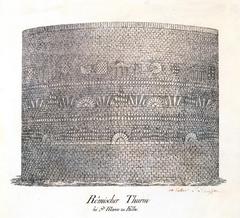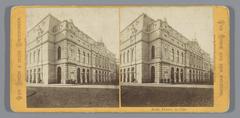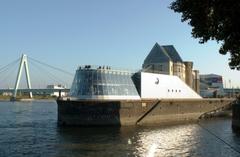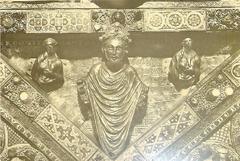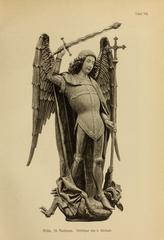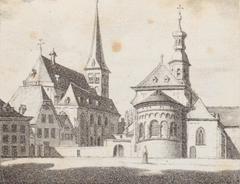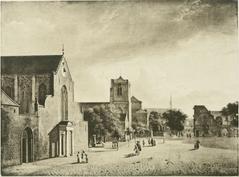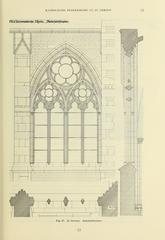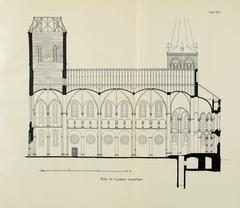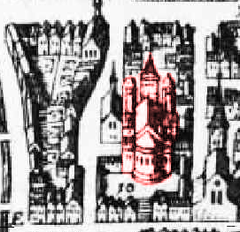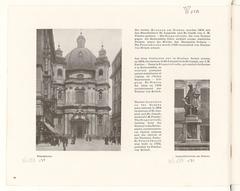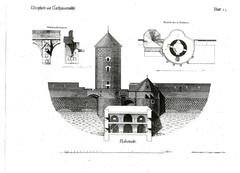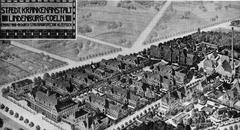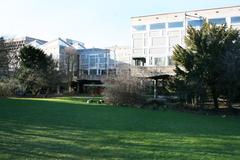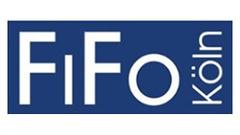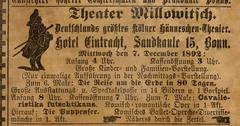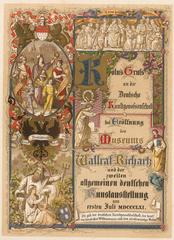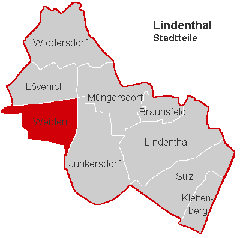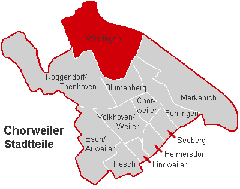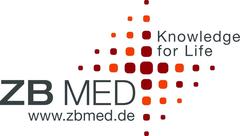Visiting In der Aue: Hours, Tickets, and Historical Sites in Cologne
Date: 31/07/2024
Introduction
In der Aue, a picturesque and historically rich area in Cologne, Germany, offers visitors a unique blend of natural beauty and cultural heritage. Cologne, initially established as a Roman provincial capital in the first century CE, has evolved through various historical epochs, each leaving an indelible mark on the city’s landscape (Planetware). In der Aue, located within this vibrant city, provides a serene escape while also reflecting Cologne’s diverse historical tapestry. From Roman influences to medieval developments and modern-day attractions, In der Aue is a microcosm of Cologne’s rich history and cultural evolution.
As a part of the city’s expansion, In der Aue played a supportive role during the Roman era and continued to develop through the medieval, Baroque, and Renaissance periods (The Crazy Tourist). The area saw significant changes during the Industrial Revolution and faced reconstruction efforts post-World War II. Today, it stands as a testament to resilience and growth, featuring a mix of historical landmarks and modern attractions. Visitors can explore sites like the Cologne Cathedral, the Roman-Germanic Museum, and the Flora Botanical Garden, each offering a unique glimpse into the past and present of Cologne (UNESCO, Römisch-Germanisches Museum, One Day Itinerary).
For those planning a visit, In der Aue offers practical amenities such as well-connected public transportation, diverse accommodation options, and a variety of dining and shopping experiences. Seasonal events like the Cologne Carnival and Christmas markets further enrich the visitor experience (Germany Travel Blog, Planetware). This comprehensive guide provides essential information to help visitors make the most of their trip to In der Aue, ensuring a memorable and enriching experience.
Table of Contents
- Exploring In der Aue: Historical Significance and Visitor Information in Cologne
Exploring In der Aue: Historical Significance and Visitor Information in Cologne
Early Beginnings and Roman Influence
In der Aue, a historically significant area in Cologne, Germany, has roots tracing back to the Roman era. Cologne itself was established as a Roman provincial capital and military stronghold in the first century CE (Planetware). The strategic location of Cologne on the Rhine River made it a vital hub for trade and military operations. In der Aue, situated within this historical context, likely served as a peripheral area supporting the main urban activities of ancient Cologne.
Medieval Developments
During the medieval period, Cologne flourished as a major ecclesiastical center. The construction of the Cologne Cathedral, which began in 1248, marked a significant era of architectural and cultural development (The Crazy Tourist). In der Aue, while not as prominent as the central areas of Cologne, played a role in the city’s expansion. The area saw the establishment of smaller churches and community centers that catered to the local population.
Baroque and Renaissance Influence
The Baroque and Renaissance periods brought further architectural and cultural advancements to Cologne. In der Aue, this era was marked by the construction of Baroque-style buildings and the enhancement of existing medieval structures. The influence of these periods is still visible in some of the architectural remnants found in the area today.
Industrial Revolution and Modernization
The Industrial Revolution in the 19th century brought significant changes to Cologne, including In der Aue. The area saw the development of industrial facilities and residential buildings to accommodate the growing workforce. The expansion of the railway network further integrated In der Aue into the broader economic activities of Cologne (Planetware).
World War II and Reconstruction
World War II had a profound impact on Cologne, with extensive bombing causing widespread destruction. In der Aue was not spared, and many historical buildings were damaged or destroyed. The post-war reconstruction efforts focused on rebuilding the city’s infrastructure and preserving its historical heritage. In der Aue saw the restoration of some of its historical structures, while new buildings were constructed to replace those lost during the war.
Cultural Significance and Modern-Day Attractions
Today, In der Aue is a blend of historical and modern elements, reflecting its rich past and ongoing development. The area is home to several cultural attractions, including museums and historical sites that offer insights into its diverse history.
Cologne Cathedral
While not located directly in In der Aue, the Cologne Cathedral’s influence extends throughout the city. This UNESCO World Heritage site is one of the most visited landmarks in Germany and a symbol of Cologne’s historical and cultural significance (UNESCO).
Roman-Germanic Museum
The Roman-Germanic Museum, located near In der Aue, houses an extensive collection of Roman artifacts, including mosaics, glassware, and jewelry. The museum provides a comprehensive overview of Cologne’s Roman history and its impact on the region (Römisch-Germanisches Museum).
Museum Ludwig
Museum Ludwig, another nearby attraction, showcases contemporary art, including works by Picasso, Warhol, and Lichtenstein. The museum’s collection highlights the evolution of modern art and its influence on Cologne’s cultural landscape (Museum Ludwig).
Flora Botanical Garden
The Flora Botanical Garden, dating back to the 1800s, is a must-visit for nature enthusiasts. The garden features a diverse collection of plants, including the only palm trees in Germany, and offers a tranquil escape from the bustling city (One Day Itinerary).
Visitor Information
For those planning to visit In der Aue, here are some practical tips to enhance your experience:
Transportation
Cologne is well-connected by public transportation, including buses, trams, and trains. The city’s efficient network makes it easy to reach In der Aue and explore its attractions. Consider purchasing a Cologne Card, which offers unlimited travel on public transport and discounts on various attractions (Germany Travel Blog).
Accommodation
There are numerous accommodation options in and around In der Aue, ranging from budget-friendly hostels to luxury hotels. Staying in the area provides convenient access to both historical sites and modern amenities. Popular choices include the Excelsior Hotel Ernst and the Hyatt Regency Cologne (A July Dreamer).
Dining
Cologne offers a diverse culinary scene, with numerous restaurants and cafes serving both traditional German cuisine and international dishes. In der Aue, visitors can enjoy local specialties such as Kölsch beer and Rheinischer Sauerbraten (a marinated pot roast). For a unique dining experience, visit Bei Oma Kleinmann, a traditional German restaurant known for its hearty portions and cozy atmosphere (Germany Travel Blog).
Shopping
In der Aue is close to some of Cologne’s best shopping streets, including Hohe Strasse and Schildergasse. These pedestrian-friendly areas are lined with a variety of shops, from high-end boutiques to souvenir stores. Don’t miss the opportunity to purchase locally made perfumes, a nod to Cologne’s historical association with Eau de Cologne (Germany Travel Blog).
Seasonal Events
Cologne hosts numerous events throughout the year, many of which take place in or near In der Aue. The Cologne Carnival, held in February, is one of the largest and most famous in Germany, featuring parades, costumes, and festivities. The Christmas markets, held in December, offer a magical experience with stalls selling crafts, food, and gifts (Planetware).
Practical Information
Before visiting In der Aue, it’s essential to check the opening hours and days of attractions, as some may be closed on certain days or public holidays. For instance, many museums in Cologne are closed on Mondays, and some restaurants may have specific opening hours (Germany Travel Blog).
Visitor FAQs
Q: What are the visiting hours for In der Aue?
A: Visiting hours for specific attractions in In der Aue vary. It’s best to check the official websites of the museums and sites you plan to visit.
Q: Are there guided tours available in In der Aue?
A: Yes, several guided tours are available that cover the historical and cultural highlights of In der Aue and Cologne.
Q: What are the ticket prices for major attractions in In der Aue?
A: Ticket prices can vary, so it’s advisable to check the official websites of the attractions for the most current information.
Q: Is In der Aue accessible for visitors with disabilities?
A: Many attractions in In der Aue offer accessibility features, but it’s recommended to check specific sites for detailed information.
Conclusion
In der Aue, with its rich tapestry of history, culture, and natural beauty, stands out as a must-visit destination in Cologne, Germany. From its early Roman roots to its medieval and modern developments, the area offers a unique window into the diverse historical epochs that have shaped Cologne. Visitors can immerse themselves in the area’s cultural significance through attractions like the Cologne Cathedral, the Roman-Germanic Museum, and the Flora Botanical Garden, each reflecting different facets of the city’s heritage (UNESCO, Römisch-Germanisches Museum, One Day Itinerary).
In der Aue is not just a historical landmark but also a vibrant community hub that offers modern amenities, making it accessible and enjoyable for all visitors. The area’s well-connected transportation network, diverse accommodation options, and rich culinary scene ensure that every visitor’s needs are met. Seasonal events like the Cologne Carnival and Christmas markets add a festive touch to the visitor experience, making any trip to In der Aue memorable (Germany Travel Blog, Planetware).
Whether you are a history enthusiast, a nature lover, or someone looking to explore Cologne’s vibrant culture, In der Aue offers something for everyone. By following the visitor tips and practical information provided in this guide, tourists can ensure a fulfilling and enriching experience. For more detailed updates and to enhance your visit, consider downloading the Audiala app or following related posts and social media updates.
References
- Planetware, Tourist Attractions in Cologne, Planetware
- The Crazy Tourist, 25 Best Things to Do in Cologne, Germany, The Crazy Tourist
- UNESCO, Cologne Cathedral: World Heritage List, UNESCO
- Römisch-Germanisches Museum, Roman-Germanic Museum Homepage, Römisch-Germanisches Museum
- One Day Itinerary, One Day in Cologne Itinerary, One Day Itinerary
- Germany Travel Blog, Cologne 3 Days Itinerary, Germany Travel Blog
- A July Dreamer, Guide to Cologne, Germany, A July Dreamer

